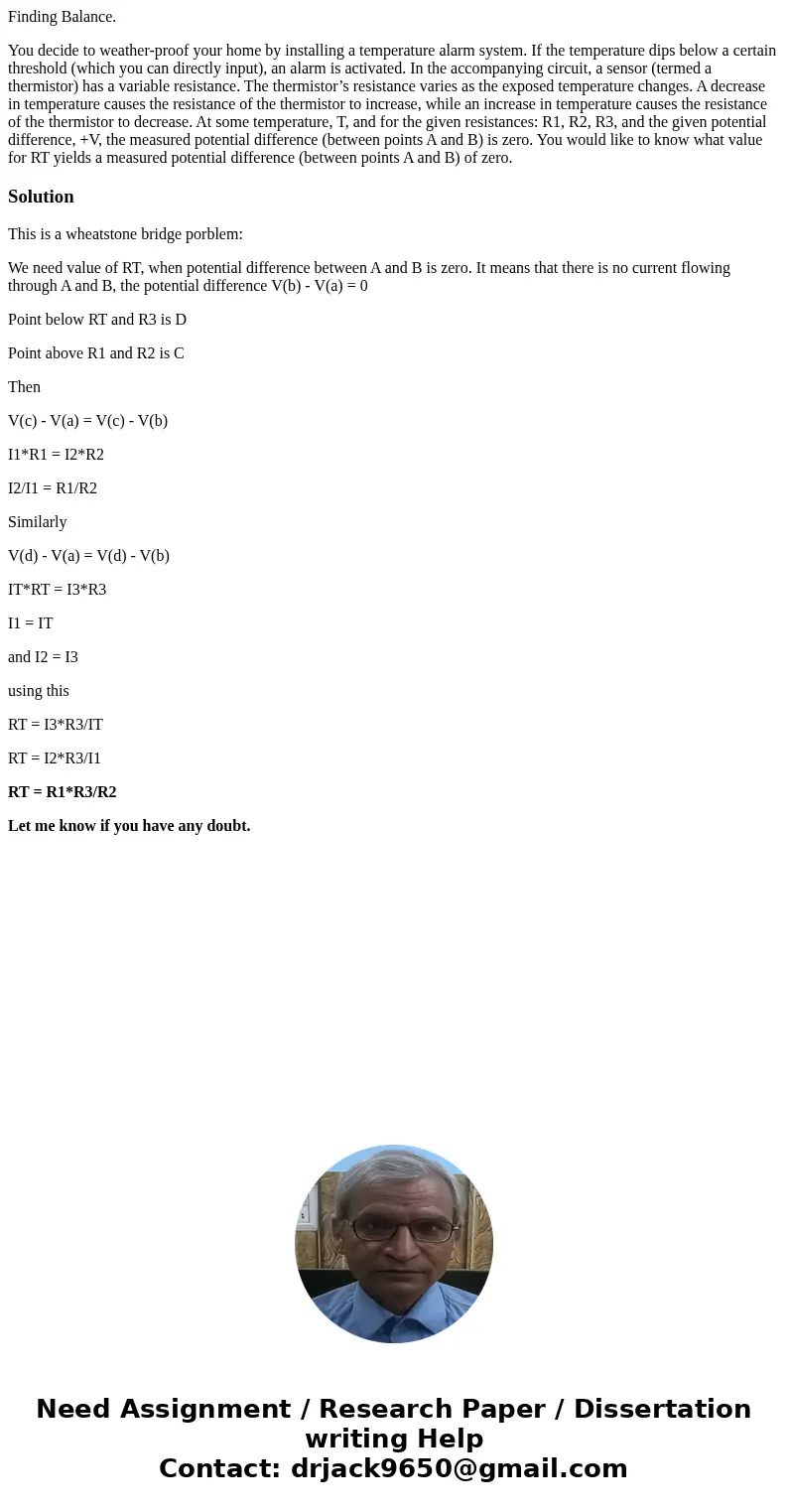Finding Balance You decide to weatherproof your home by inst
Finding Balance.
You decide to weather-proof your home by installing a temperature alarm system. If the temperature dips below a certain threshold (which you can directly input), an alarm is activated. In the accompanying circuit, a sensor (termed a thermistor) has a variable resistance. The thermistor’s resistance varies as the exposed temperature changes. A decrease in temperature causes the resistance of the thermistor to increase, while an increase in temperature causes the resistance of the thermistor to decrease. At some temperature, T, and for the given resistances: R1, R2, R3, and the given potential difference, +V, the measured potential difference (between points A and B) is zero. You would like to know what value for RT yields a measured potential difference (between points A and B) of zero.
Solution
This is a wheatstone bridge porblem:
We need value of RT, when potential difference between A and B is zero. It means that there is no current flowing through A and B, the potential difference V(b) - V(a) = 0
Point below RT and R3 is D
Point above R1 and R2 is C
Then
V(c) - V(a) = V(c) - V(b)
I1*R1 = I2*R2
I2/I1 = R1/R2
Similarly
V(d) - V(a) = V(d) - V(b)
IT*RT = I3*R3
I1 = IT
and I2 = I3
using this
RT = I3*R3/IT
RT = I2*R3/I1
RT = R1*R3/R2
Let me know if you have any doubt.

 Homework Sourse
Homework Sourse